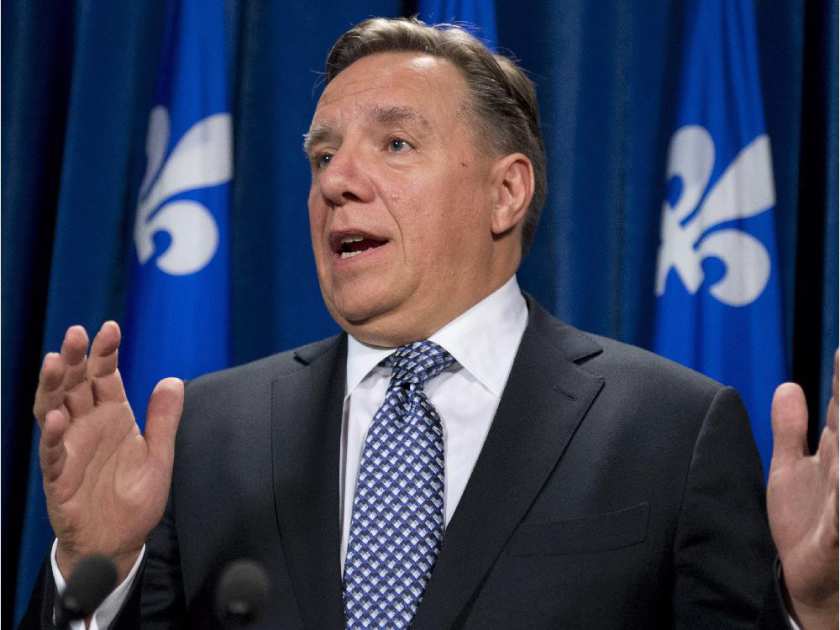It feels like déjà vu all over again.
The COVID-19 fifth wave caused by the Omicron variant is spreading like wildfire and our governments were once again asleep at the wheel and slow to react. Across the country, in varying degrees, governments seem ill-prepared. Once again. The Omicron variant took the country by surprise.
Cue the provincial calls for army deployments. Cue the chaotic search for vaccination appointments. Cue the stock ruptures of rapid tests. Cue the Soviet-style line-ups to get tested. Cue the increased sanitary measures. Haven’t they learned anything over the past two years? That’s a question people are entitled to ask.
To be fair, things happened fast. Much faster with Omicron than any of the previous waves. The new variant was first detected on November 22 and reported to the World Health Organization on November 24. Two days later, the WHO designated it as a variant of concern. Travel restrictions were introduced by several countries in an attempt to slow its international spread. Canada reacted the same day, on November 26, by restricting travellers from several African countries from entering Canada.
By then, it was already too late and soon became pointless. The first case of Omicron in Canada was reported on November 28. Yet, despite media reports of the rapidity at which Omicron was spreading in South Africa and elsewhere, our politicians didn’t seem to have much concern.
For instance, despite the rise of cases, which began prior to Omicron’s arrival, reopening was still the operative word. Barely over a week ago, Premier Legault was full steam ahead with bigger Christmas parties while ordinary people, sensing things were turning, were canceling reservations in hotels and restaurants.
On December 14th, Health Minister Christian Dubé, flanked by Quebec Public Health Director Dr. Horacio Arruda, began his news conference by stating it was likely the last one before the Holidays. People were scratching their heads. Haven’t they heard about Omicron? Didn’t they know it was now prevalent in Ontario? They had, they knew, they were prudent, and they were monitoring.
Not a word on schools, which is where the November spike of cases was most prominent, especially amongst the not yet vaccinated younger cohorts. Even when they actually realized that Omicron was now out of control, on November 16, in a dramatic press conference during supper hour newscast, Premier Legault was adamant: schools were going to stay open, despite a flurry of restrictions, including smaller Christmas gatherings and restrictions on restaurant capacity. Parents shook their heads and a lot of them kept their kids home.
Two days later, another dramatic press conference and schools were being closed. Two days later, even more restrictions were brought in by the Premier. Not as dramatic as his spin doctors had floated in the 48 hours leading up to that newser, mind you. The trial balloons of canceling Christmas gatherings and imposing another curfew floated by Legault’s spin doctors did not sit well with the electorate.
Because people are fed up. They were promised, time and time again, that if they did the right things, if they followed the rules, if they got vaccinated, we would go back to normal. It ain’t happening. Our governments are just not able to react promptly and properly. But there are two other main culprits.
First, the unvaccinated, which account for more than 50% of the COVID hospitalizations despite being less than 15% of the population. Calls are growing for politicians to deal with them, perhaps Austria-style. It seems doubtful in Quebec and Ontario, in an election year.
Second, the lack of medical resources. Canada has one of the fewest hospital beds per capita in the OECD. It’s even worse if you look at ICU capacity. Politicians are afraid to overload the system. We’ve heard that over and over: it has been the number one factor in their decisions during the course of the pandemic. The number of hospital beds occupied by COVID-19 patients in Canada is around 1,100, and 500 more patients are occupying ICU beds. And we’re almost at capacity, for a country of 38 million.
Yet, health care is the biggest line in provincial budgets. The capacity of our health care system has eroded over the years, starting in 1976. Until then, the Federal Government used to cover 50% of our health costs. The Federal share currently sits at 22% under Prime Minister Justin Trudeau. You would think this pandemic would make him realize that perhaps it is time to sit down with the Premiers and restore the federal health care transfers. Just so we can perhaps be ready for the next pandemic.






